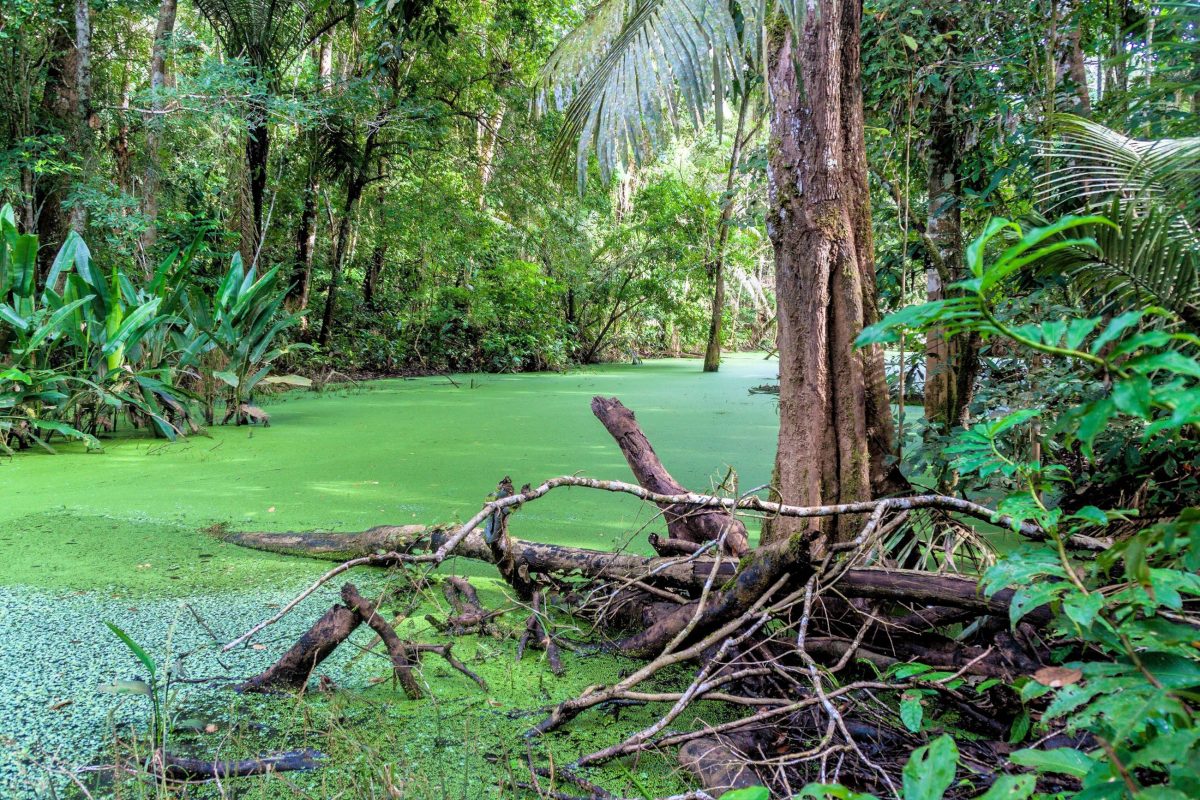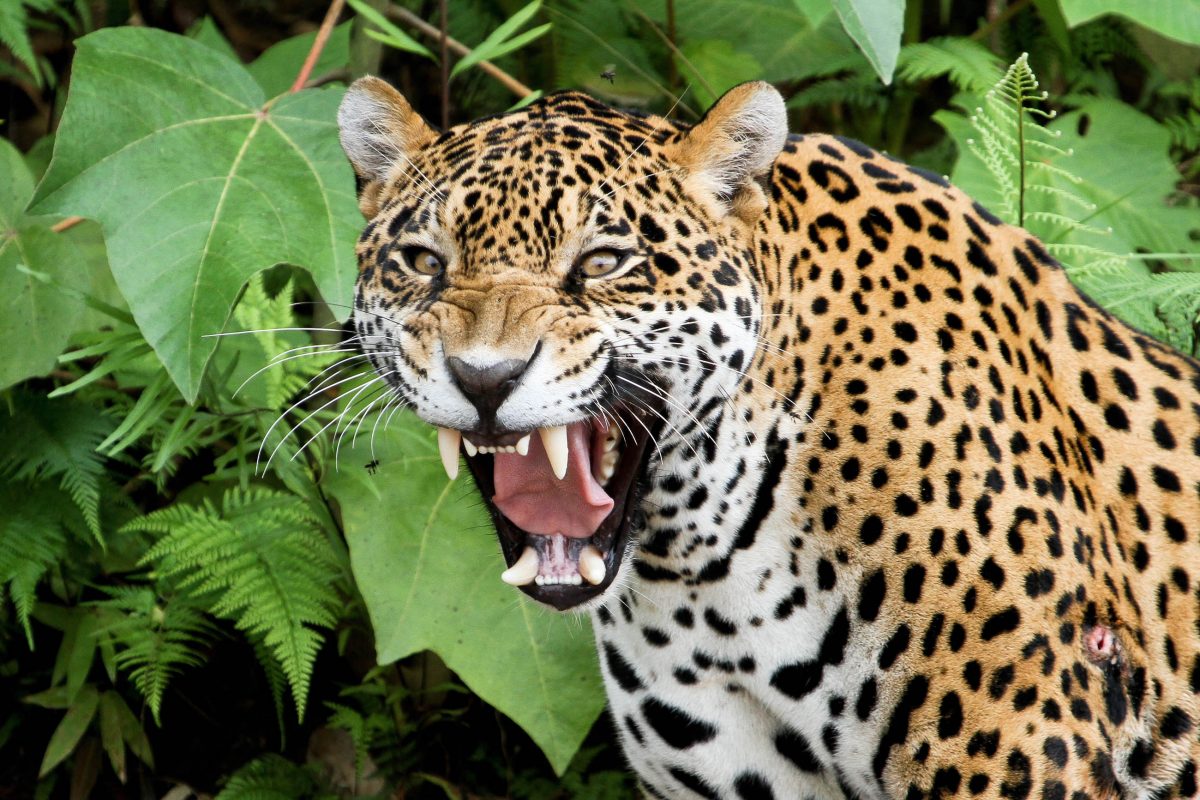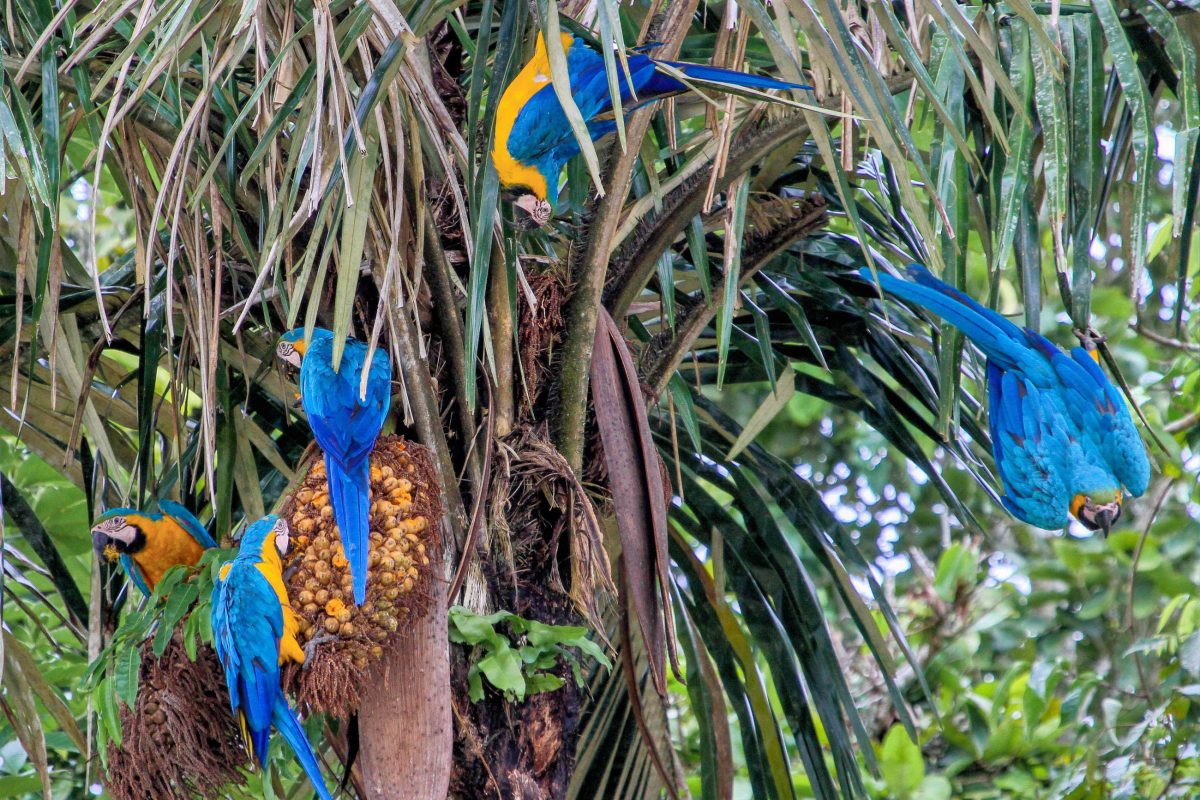Der Madidi Nationalpark im Nordwesten von Bolivien beherbergt die weltweit meisten bedrohten Arten und ist dank seiner enormen landschaftlichen Vielfalt ein lohnendes Ziel für Outdoor-Urlauber, Trekker und Naturfreunde.
Rund 200km nördlich von La Paz, dem Regierungssitz von Bolivien, liegt mit dem Madidi Nationalpark ein einmaliges Naturparadies, welches zu den artenreichsten Regionen der Welt zählt. Er beherbergt mehr bedrohte Arten, als jeder andere Nationalpark auf der Welt.
Inhaltsverzeichnis
BILDER: Nationalpark Madidi
Fotogalerie: Nationalpark Madidi
Gigantische Klima- und Artenvielfalt im Nationalpark Madidi

Der Madidi Nationalpark erstreckt sich über eine Fläche von knapp 20.000 Quadratkilometern von den schneebedeckten Gipfeln der Anden auf bis zu 5.760 Metern bis zu den tropischen Gefilden des Amazonas-Gebietes 180m über dem Meer. Er hat seinen Namen vom Rio Madidi, gemeinsam mit dem Rio Tuichi der bedeutendste Fluss im Nationalpark.
Durch die große Anzahl an Höhen- und Klimazonen konnte sich im Nationalpark Madidi eine immense Artenvielfalt entwickeln. Rund 20.000 verschiedene Pflanzenarten gedeihen innerhalb seiner Grenzen, die an die 150 verschiedenen Säugetieren, 180 Reptilien-Arten und über 860 Vogelarten Schutz und Nahrung bieten.
Außerdem leben 85 Prozent aller Amphibien Boliviens im Madidi Nationalpark. Bedrohte Tierarten wie Brillenbär (der einzige Bär Südamerikas), Nordandenhirsch, Puma, Jaguar, Flussdelfin, sowie Anden- und Salzkatze sind hier ungestört.
Beste Reisezeit für den Madidi Nationalpark

Von November bis März dauert in dieser Region Boliviens die sommerliche Regenzeit, die viele Wege unpassierbar macht. Die beste Reisezeit für den Madidi Nationalpark ist demnach von Juni bis Oktober, mit Temperaturen von 25°C bis 33°C. Im Juni und Juli können arktische Winde die Temperatur auf bis zu 10°C fallen lassen.
Trotz der Trockenzeit muss im Regenwald immer mit Niederschlägen gerechnet werden. Zu dieser Zeit sind natürlich auch die meisten Touristen anzutreffen. Überlaufen oder unangenehm „voll“ ist der Madidi Nationalpark aber auch in der Hauptsaison so gut wie nie.
Tipp: Egal wann Sie den Madidi Nationalpark besuchen, unbedingt Insektenschutzmittel oder zumindest lange Kleidung mitnehmen, die Arme und Beine bedeckt.
Unterwegs im Madidi Nationalpark

Touren durch den Madidi Nationalpark erfolgen nur in Gruppen mit einem Guide. Den Dschungel auf eigene Faust zu erkunden, ist zwar grundsätzlich möglich, aber nicht zu empfehlen. Viele Einheimische bieten sich an, Touristen ihre faszinierende Welt zu zeigen. Die perfekte Aufenthaltsdauer für den Madidi Nationalpark liegt zwischen 3 und 5 Tagen.
Je nach Zeit und Interesse können die Ausflüge in den Madidi-Nationalpark bis zu mehreren Tagen mit Übernachtung in Holz- und Bambushütten dauern. Die Camps sind zumeist sehr einfach gehalten, Strom gibt es nur zeitweise, dafür aber kleine Küchen und Waschräume. Die simplen Unterkünfte geben einen Einblick in die Lebensweise der einheimischen Stämme, die nach wie vor in ihren Hütten im Dschungel leben.
Basislager Rurrenabaque

Ausgangspunkt für viele Touren im Nationalpark ist Rurrenabaque am Rio Beni. Die Stadt ganz im Osten des Nationalparks zählt mittlerweile zu den wichtigsten Reisezielen Boliviens. Sie besitzt sogar einen eigenen kleinen Flughafen, der von La Paz oder Trinidad aus regelmäßig angeflogen wird. Nicht nur der Madidi Nationalpark kann von Rurrenabaque aus erkundet werden, sondern auch die kaum weniger sehenswerten Pampas-Gebiete der Umgebung.
Tipp: Ende April bis Mitte Mai ist das Wetter mit etwas Glück schon wunderbar und es finden sich noch kaum Touristen in Rurrenabaque ein.
Den Madidi Nationalpark erleben

Auf den Wanderungen oder Bootsfahrten durch den Nationalpark erfahren Touristen, welche Pflanzen medizinischen Zwecken dienen, welche Dornen als Pfeile verwendet werden und aus welchen Beeren Farbe gewonnen wird. Viele der tropischen Früchte sind gefahrlos essbar und dienen mitten im unberührten Dschungel als interessanter Snack, während Schwärme von Papageien über den Baumwipfeln kreisen.
Zu den besonderen Erlebnissen im Madidi Nationalpark gehören außerdem Wildwasser-Tubing, Piranha-Fischen, Schmuckherstellung bei Kerzenschein, Dschungelwanderungen bei Nacht und ein Besuch bei den einheimischen Stämmen, die immer noch ihren alten Traditionen folgen. Sie leben wie schon in den letzten Jahrhunderten von Landwirtschaft, Handwerkskunst und Fischerei, steigen aber auch zunehmend in den Tourismus ein.





